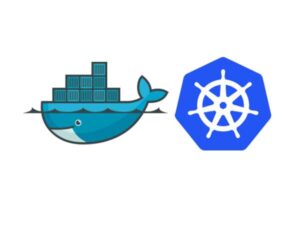Morten ile Kariyerinizde Fark Yaratın
Kariyerinde zirveye ulaşmayı hedefleyenlerin güvenilir adresi olan Morten, uluslararası düzeyde sağladığı eğitim kalitesiyle fark yaratıyor. Bugüne kadar, 90’dan fazla öğrencisinin dünyanın en prestijli IT sertifikasyonlarından biri olan CCIE sınavını başarıyla geçmesine olanak tanıyarak, sektörde eşsiz bir başarı hikayesi yazmıştır. Bu olağanüstü başarı, Morten’in eğitim alanındaki uzmanlığını ve güvenilirliğini gözler önüne seriyor. Bugün bile, bu seviyeye ulaşabilen başka bir eğitim kurumu bulunmamaktadır.
Morten, kurulduğu günden bu yana 25.000’den fazla bireysel katılımcıya ve 7.000’den fazla kurumsal müşteriye eğitim sunmuş, bilgi teknolojileri alanında önemli bir çözüm ortağı haline gelmiştir. Eğitimde kaliteye olan bağlılığı ve inovasyona verdiği önem, onu sektör lideri yapan en önemli unsurlardan biridir.






Global ve Yerel Çapta Tanınan Bir Başarı
Morten’in üstün başarıları, yalnızca Türkiye sınırları içinde değil, global çapta da geniş bir yankı uyandırmıştır. Ödüllerle taçlanan bu yolculuğun önemli dönüm noktalarından bazıları:
- 2017: Cisco tarafından Learning Partner of the Year-Middle East ödülüne layık görüldü.
- 2016: San Francisco’daki Global Learning Partner Conference’ta yine Cisco tarafından “Dünyanın En İyisi” olarak seçildi ve Türkiye’ye ilk kez Cisco Learning Partner of the Year Award, Indirect ödülünü kazandırdı.
- 2014: Los Angeles’ta düzenlenen Global Learning Partner Conference’ta, EMEAR Bölgesi’nde Acceleration Award Indirect ödülünü kazandı. Aynı etkinlikte, Morten’in üç eğitmeni (CCSI), Cisco eğitmenlerine verilen en prestijli ödül olan Quality Instructor Award ile onurlandırıldı.
2019 yılına kadar eğitim ve danışmanlık misyonuyla faaliyetini sürdüren Morten, bu yıldan itibaren Cisco entegratör partneri olarak ürün satış, kurulum, servis ve eğitim hizmetleri ile uçtan uca müşterilerinin yanında olmaya devam etmektedir.
Kategoriler
Collaboration Automation (CLAUTO)
Collaboration Automation (CLAUTO) Eğitim Hakkında Ön Koşullar CLCOR certification or knowledge, CCNA certification or knowledge Eğitim Süresi Instructor-led training: 5 days with hands-on lab
Microsoft Identity and Access Administrator (SC-300)
Eğitim Hakkında Microsoft SC-300 eğitimi, kurumsal uygulamalara güvenli kimlik doğrulama ve yetkilendirme erişimi sağlama gibi görevleri yürütmeyi öğretiyor. Ayrıca tüm kullanıcılar için sorunsuz deneyimler ve
Microsoft Azure Security Technologies (AZ-500)
Eğitim Hakkında Microsoft AZ-500 eğitimi, IT Güvenlik Profesyonellerine güvenlik kontrollerini uygulamak, bir organizasyonun güvenlik duruşunu korumak ve güvenlik açıklarını tespit edip gidermek için gereken bilgi
Designing and Implementing Microsoft Azure Networking Solutions (AZ-700)
Eğitim Hakkında Microsoft AZ-700 Eğitimi, Network Engineers (Ağ Mühendisleri) için Azure ağ çözümlerini tasarlama, uygulama ve bakımını yapma becerilerini geliştirir. Microsoft AZ-700 Eğitimi; Azure’un temel ağ
Designing Microsoft Azure Infrastructure Solutions (AZ-305)
Eğitim Hakkında Microsoft AZ-305 Eğitimi, Azure Çözüm Mimarlarına altyapı çözümleri tasarlamayı öğretiyor. Eğitim kapsamında yönetim, hesaplama, uygulama mimarisi, depolama, veri entegrasyonu, kimlik doğrulama, ağlar, iş
Configuring Windows Server Hybrid Advanced Services (AZ-801)
Eğitim Hakkında Microsoft AZ-801 Eğitimi, IT profesyonellerine hibrit ve bulut teknolojilerini kullanarak ileri düzey Windows Server hizmetlerini konfigüre etmeyi öğretiyor. Azure’un hibrit yeteneklerinden yararlanmayı, sanal
Administering Windows Server Hybrid Core Infrastructure (AZ-800)
Eğitim Hakkında Microsoft AZ-800 Eğitimi, IT Profesyonellerine Windows Server iş yüklerini ve hizmetlerini şirket içi, hibrit ve bulut teknolojilerini kullanarak yönetmeyi öğretir. Kurs, IT Profesyonellerine
Microsoft Certified: Azure Administrator Associate
Eğitim Hakkında Özel: Azure Yöneticisi, bir bulut ortamında kimlik, yönetişim, depolama, bilgi işlem ve sanal ağları uygular, yönetir ve izler. Bu kurs, BT Profesyonellerine Azure
Understanding Cisco Wireless Foundations (WLFNDU)
Eğitim Hakkında “Understanding Cisco Wireless Foundations (WLFNDU)” v1.0 kursu, size Cisco® kablosuz LAN (WLAN) ağını konumlandırmak, planlamak, uygulamak, çalıştırmak ve yönetmek için gereken bilgi ve
